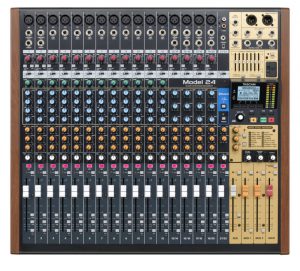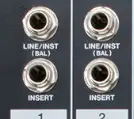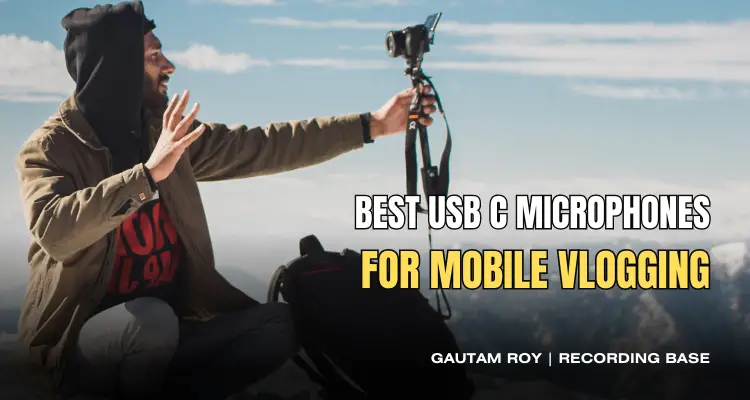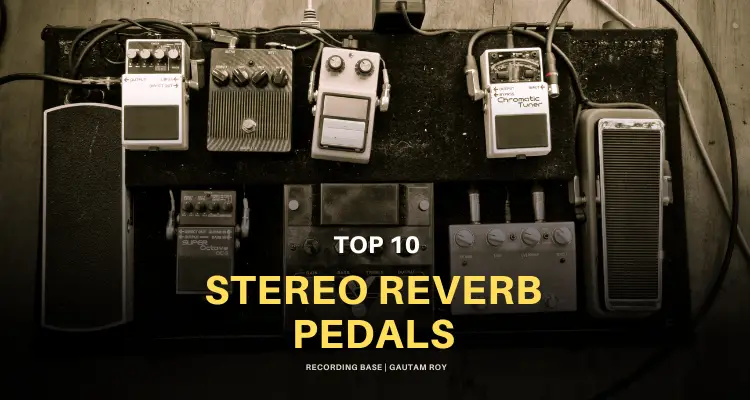The mixing console is an essential gear in Pro studios as well as in Live music.
Even today, when most of the small studios adopted the digital mixing/routing software provided by the audio interfaces, the mixing console is an integral part of many studios.
Its also used in live concerts to route the inputs and outputs.
So, as a music producer, you must know what is mixing consoles is and how does it work?
In this article, I will introduce you to the typical mixing console and all the parts of it.
First off…
Table of Contents
What is Mixing Console or Mixer?
Mixing consoles is an electronic device that combines different input sound signals such as mic and acoustic instrument, electric or electronic instruments, and recorded music, allowing you to change the level, tone, and/or dynamics of audio signals and sum them up to produce the combined output signals. These output signals can then be broadcast, amplified through an amplifier, or recorded for future listening.
Mixing consoles are used in various applications such as recording studios, public address systems, broadcasting, television, sound reinforcement systems, and post-production for movies.
Disclosure: This post may contain affiliate links, which means we may receive a commission if you click a link and purchase something that we recommended. Read more about Affiliate disclosure here.
According to input and output signal options, there are 2 types of mixing consoles that exist.
- Analog Mixing consoles (Support only analog inputs signals)
- Digital Mixing consoles (Support both analog and digital input signals)
Let us know the different features of a mixing console in detail
Features of Mixing Console

A typical mixing console or mixer is consists of several different parts combined in one board.
such as…
- Channel Strips
- Inputs
- Inserts
- Attenuation
- EQ
- Aux Sends
- Pan Pots
- Mute and solo buttons
- Channel Faders
- Master channel fader
- Outputs
Channel Strips

Maybe you are familiar with the term channel strip – if you’ve used any channel strip plugin. In mixing consoles, channels strips are made of faders, panpots, mute and solo switches, inputs, inserts, aux sends EQ, and other features.
Basically, channel stips are used to control the level, panning, and dynamics of individual input signals.
Inputs

Inputs are the part of channel strips in which we connect our instruments, mics and other devices to get the sound into the mixer.
You can say it is the first place where the sound enters the mixing console. Generally, 1/4 phono jack for line signals and XLR jacks for microphones are used as the input socket.
Inserts

These 1/4″ phono inputs are used to connect an outboard effect processor such as compressor, limiter, reverb and delay to the respected input signal.
When an insert effect is connected with the insert of any channel strip the signal is first routed to the effect processor and then the wet signal comes back to the channel strip.
Attenuation

Attenuation or signal level knobs are used to control the gain of the input signal. It can be routed as pre-fader (where the signal level attenuates before faders) and post-fader ( signal level attenuates after fader) as well.
EQ

Most of the mixing consoles are equipped with separate equalizers for each channel strip. In analog mixers, you can find them as 3 or 4 knobs that control the equalization of low, mid and high frequencies.
Where in digital mixing consoles you are provided with a digital EQ panel that you can control on the LCD display provided in the console.
In several digital mixing consoles manufacturers also provide separate compressors, limiters, delay,s and reverb for each channel that you can control via the same LCD display.
Aux Sends

Aux sends are used for several purposes. The first use of aux or auxiliary sends is to route the input signals to the aux outputs that are used to provide a monitor to the musicians in a concert.
This approach helps musicians to hear clearly what they are playing.
The second common use of aux sends is controlling the amount of effect if the same effect processor is used for various instruments and vocals.
Let us assume, you have one reverb unit that you want to use in vocals as well as in acoustic guitar.
In this situation, you connect the reverb unit to aux-in and then use the aux send faders to control the amount of the reverb needed in vocals and guitar.
Generally, there are a minimum 4 aux send faders are provided in any mixing console.
Pan Pots

Pan pots are used to pan the signal to the left or right speakers. In concerts and studios, we always use stereo speakers. By using panning we can give place to various instruments and vocals in the mix.
In digital mixing consoles 5.1 and 7.1 surround systems are used that we can control with the LCD display provided on the console.
Mute and solo buttons

You can find these buttons on each individual channel. These buttons are used to soloing and mute particular inputs.
Channel Faders

Channel faders are used to control the gain of the input device. The standard fader length is 100mm but in some mixing consoles, you can would smaller faders.
Faders are one of the most important features of the mixer as they are used to balance the volume of the instruments to get the perfect mix out.
Master channel fader

Master channel fader is used to control the output volume that goes to the amplifiers and recording devices.
Outputs

These phono and XLR sockets are the final destinations of all the signals that enter into the mixing console. You can see a number of output connectors in the output section.
Such as Monitor out, main out, Aux out, headphone out, etc. These output sockets are used to connect PA amplifiers, headphones, monitor speakers, and other sound reinforcement devices.
So here were all the features a mixing console provides us.
Now, let us know the types of mixing consoles.
Types of Mixing Consoles
There are two types of mixing consoles that we encounter in the studios and PA systems.
- Analog Mixing Console
- Digital Mixing Console
Analog Mixing Console
Analog mixing consoles are only capable of handling analog input signals and are common in PA systems where generally analog cables are used.
However, back before the digital mixing consoles come into play, analog ones were common in the recording studios. But today digital mixing consoles have taken over the place.
Digital Mixing Console
Digital mix consoles are capable of handling analog as well as digital audio input signals. Such as optical cable signals word clock signals.
These are now common in big recording studios. As there are many additional features you get they are higher in price in comparison to analog ones.
There are several benefits of using digital mixing consoles such as you can control all the effects, sends, returns, busses, etc via the display panel provided in the digital consoles.
They are lightweight and compact in comparison to analog mixers. Once you get familiar with them it’s easy to manage all the tasks with no time.
These are some of the reasons digital mixing consoles are used in almost all big studios.
Now come to the comparison between the mixing console and the audio interface…
Mixing Console VS Audio Interface

Today, when we can easily set up a small studio with just an audio interface and a computer why do most of the big studios use digital mix consoles?
Well, here are some advantages of mixing consoles over audio interfaces.
- They make your studio more professional. With just an audio interface you can’t make your studio fully professional. Mixing consoles help in that.
- They give analog feel in the audio. People die for the analog feel of the 70s which is tough without using analog gears in your workflow. Mixers are the most common analog gear that you can use to add analog feel in your track.
- All the controls are on your hands. With the mixer software of audio interface, it’s not possible to easily control the process. But with mixers, it is very easy.
- In mixing consoles you get physical fader that can help you precisely balance your project. If you don’t know I would tell you that in faders with each 1dB the signal level multiplies. Due to this phenomenon, it’s hard to balance perfectly through your computer mouse. So the best way to balance the track is by using mixing consoles.
FAQ
What does a mixing console do?
Mixing console captures and combines different input sound signals such as mic and acoustic instrument, electric or electronic instruments, and recorded music, allowing you to change the level, tone, and/or dynamics of audio signals and sum them up to produce the combined output signals.
What are the 3 types of mixing consoles?
The 3 types of mixing consoles are powered, analog, and digital mixing consoles.
What is the difference between mixer and console?
There is no difference between a mixing console and a mixer except mixing consoles are large in size hence mounted on a desk.
Do I need a mixing console?
We can do audio recording without a mixing console however, this device makes it easy to capture and combine the tracks without jumping into multiple devices.
Can I use a mixer instead of an audio interface?
If your mixing console has a built-in audio interface then you don’t need a separate audio interface.
Conclusion: Mixing Consoles
Well, here was all the details of mixing consoles. Hope you’ve learned something valuable from this article.
Mixing consoles are an integral part of audio recording and live audio and have been used for decades. So, to get a better output consider buying one for your studio. It helped me and will also help improve your mixes.
If you have any questions comment below and I will be happy to answer your questions.
Sharing is caring
Share this article on Facebook and Instagram to help others know about the mixing consoles.
Read also,






